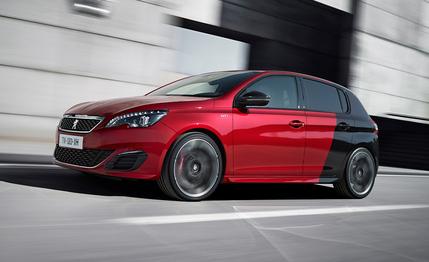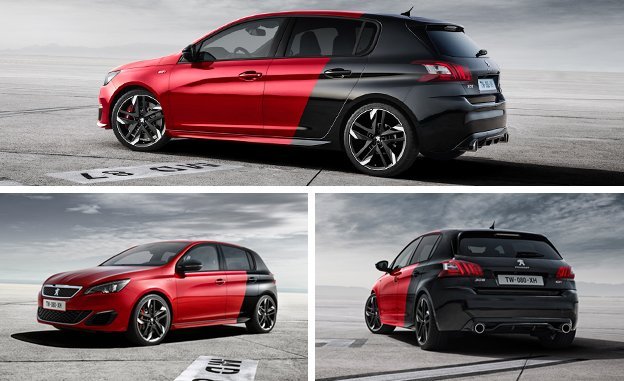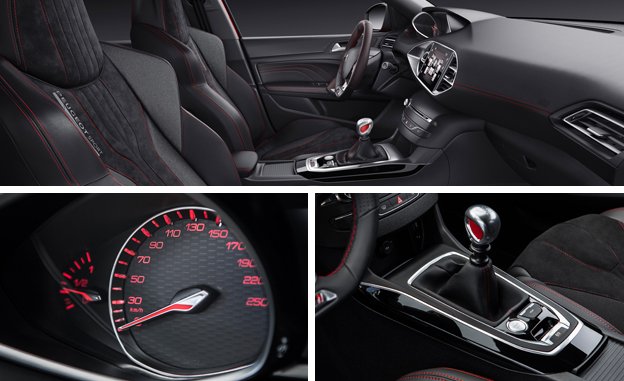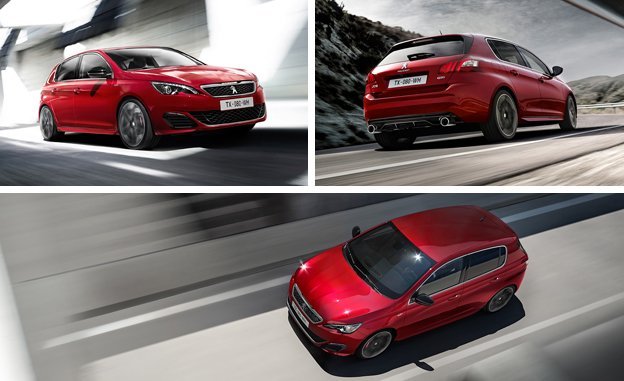
 First Drive Review
First Drive Review
Let’s imagine a parallel universe, a réalité alternative where France’s automakers had succeeded in launching themselves in the U.S. and Germany’s had failed. It would be a world where big Citroëns still rolled through towering cityscapes on hydraulic springs, where Peugeot hadn’t raised the white flag in 1991 and where Renault had said non to its own disastrous Alliance. A world where Volkswagens, Audis, and BMWs were seen as far-off exotics and where you could buy a car like the new Peugeot 308 GTi 270 off a dealer’s lot in Chicago, Portland, or Poughkeepsie.
But that’s not, you know, our actual reality, and this hot Peugeot is just another Euro megahatch we periodically review to tease you. It’s also welcome proof that the French have not forgotten how to make performance cars. There’s certainly a proud heritage to draw on; Volkswagen might have been first to apply the GTi brand to a model—VW now uses all capital letters—but Peugeot made the very greatest of the first-wave Euro pocket rockets in the tail-happy 205 GTi, a car that has practically been sanctified by nostalgic gearheads in recent years.


Not that the basic Peugeot 308 is in any way exciting. It’s a conventional hatchback that’s sold in Europe (and some other non-U.S. markets) as a slightly dull rival to the Ford Focus and the VW Golf. Prior to the arrival of the GTi, the most interesting thing about the 308 was the fact its tachometer needle goes backward, tracing a counterclockwise arc in Gallic defiance of pretty much every other car in the world.
The GTi 270, on the other hand, is definitely interesting. Its official name is Peugeot 308 GTi by Peugeot Sport, a clunky indication that the company’s motorsports division has been charged with delivering something more thrilling than the legions of lackluster GTis that followed the classic ’80s and ’90s versions. This might trigger expectations that it will be a turned-up-to-11 rally replica, but it’s not that.
Visually, the GTi 270 is understated to the point of reactionary conservatism, as subtle as French deodorant. That is, unless you specify the compellingly mad option of the Coupe Franche paint, a diagonally split two-tone that makes it look as if the front of a red 308 GTi 270 has been welded to the back of a gray one. In a more traditional single-color scheme, it’s distinguished from the basic 308 only by a modest body kit and 19-inch wheels. Get close and you notice that these wheels hide vast brake rotors, gripped by serious-looking Alcon calipers at the front. Yet next to be-winged monsters like the Euro-spec Honda Civic Type R, it’s understated to the point of being self-effacing.


Yet there’s no lack of firepower. The engine is a heavily revised version of the 1.6-liter turbocharged four-cylinder that, as a PSA-BMW joint venture, powered the previous-generation Mini Cooper S. The GTi 270’s engine has forged Mahle pistons and friction-reducing polymer-coated bearings helping it to produce 266 horsepower at 6000 rpm. Power goes to the front wheels through a six-speed manual gearbox and a Torsen limited-slip differential. Sticky Michelin Pilot Super Sport tires provide the interface with the pavement. Physics is on the GTi’s side, too, with an impressively svelte curb weight of roughly 2700 pounds giving it a power-to-weight ratio that’s almost as good as the Civic Type R’s.
Dynamically, the 308 GTi 270 has the sort of split personality that would make Robert Louis Stephenson consider writing a Gothic horror story. The first surprise is the driving position, an apparent confirmation that the ape that used to define the cramped ergonomics of Italian cars has crossed the Alps. The instruments are small and installed to be partially obscured where most drivers position the steering wheel, the footwell is cramped, and average-size legs are pressed uncomfortably against the center console.
Drive the 308 gently and it feels as you imagine a French car should. The engine has noticeable lag down low —you’re never in any doubt that the four-banger is small and highly boosted. But the ride is impressively pliant over broken surfaces. The gearshift has a long throw, and the brakes have very generous boost. It’s a nice, well-insulated companion at urban speeds, but unlike hard-edged rivals like the Civic Type R and the Renault Mégane R.S. 275, there’s no sense of a lurking beast; it feels like a fractionally firmer version of the standard rental-spec 308.


Up the pace, though, and the GTi 270 suddenly discovers a seriousness of purpose in contrast to its laid-back everyday demeanor. Once the turbo is spinning and delivering close to its peak boost, there’s serious shove all the way to the limiter. Grip levels are high, and the front differential does a good job of both delivering traction and keeping the front end in line without making it feel as if war has broken out at the front axle. But it’s the steering that delivers the real revelation. Some aggressive suspension-geometry changes have delivered both quick turn-in and genuine feedback through the electric assistance. The throttle response is just as crisp, and although the GTi 270 doesn’t oversteer like the most amusing of its 1980s predecessors, it trims and tucks its cornering line beautifully in response to the gas pedal.
The brakes are equally impressive. It takes some time to get used to the high levels of assistance, and the tight footwell stymies most attempts at heel-and-toe rev matching, but the motorsport-grade brakes give tireless retardation. Even on a test route that included both a mountain pass and some unchaperoned pounding around the Braga race circuit in Portugal, we didn’t experience a hint of fade.
It makes sense for the Peugeot 308 GTi 270 to plow its own furrow. In Europe, the 250-plus-hp hatchback segment is packed to the saturation point. In addition to the familiar Golf R and Audi S3, there are—in no particular order—the SEAT Leon Cupra, Honda Civic Type R, Opel Astra OPC, Renault Mégane R.S. 275, Mercedes-Benz A45 AMG, and BMW M135i. There’s something compelling about the idea of a car that speaks so softly but carries such a big stick, and one that doesn’t compromise its everyday usability to deliver such impressive performance. Sadly, it will never cross the Atlantic, but if you’re in Europe it’s well worth looking up.